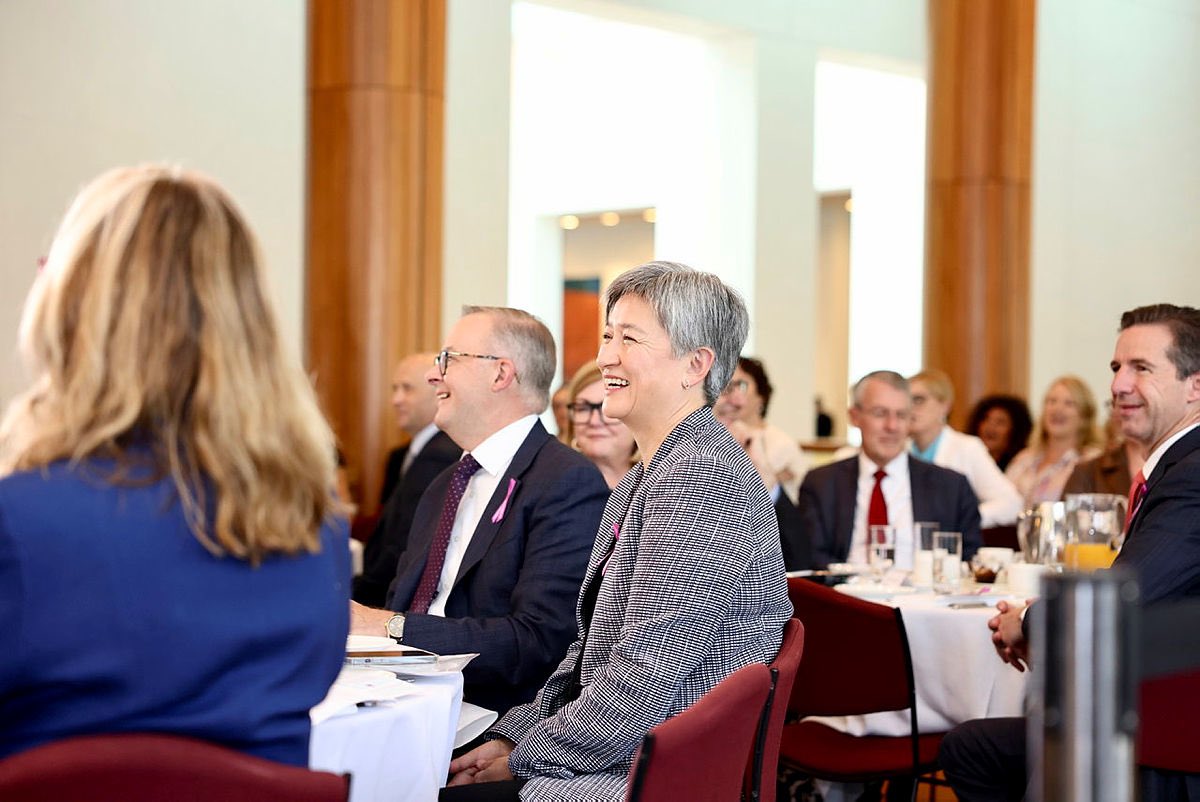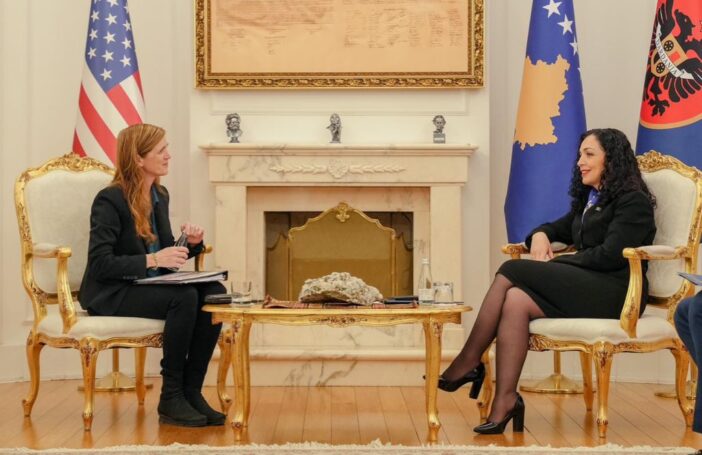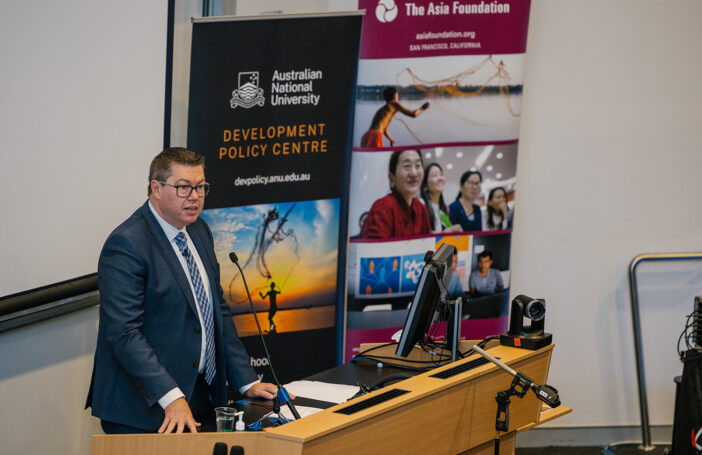Earlier this year, Foreign Minister Penny Wong announced that the Albanese government would be developing a new international gender equality strategy. The current gender equality and women’s empowerment strategy, developed two years after the merger of AusAID and DFAT in 2013, was ground breaking for Australia in that it covered all areas of foreign policy not just international development – the tool of statecraft that is more traditionally “feminised” compared to defence or trade, which are typically portrayed in masculine terms.
While the 2015 strategy laid an important foundation, the new strategy will need to respond to a more complex set of circumstances: the inequalities exacerbated by the COVID-19 pandemic and war in Ukraine, and, closer to home, the military coup in Myanmar and geopolitical competition in the Pacific, just to name a few. At the same time, feminist foreign policy (FFP) has emerged as a serious alternative to traditional approaches, with 12 countries embracing the approach. With a new government, Australia has a chance to take the next step towards a more feminist approach.
Luckily, Australia is not alone. The United Kingdom, United States and Germany have recently released important feminist and/or gender focused strategies that seek to achieve sustained positive change towards gender equality.
The UK is in the position Australia was ten years ago, with its foreign policy and international development arms having merged in 2020 into the Foreign, Commonwealth and Development Office (FCDO). The International Women and Girls Strategy 2023-2030 accordingly speaks to all areas of the UK’s foreign policy, from development to multilateralism, diplomacy and trade. While the UK Development Minister Andrew Mitchell recently emphasised the important and central role of development to overall foreign engagement, it is important to note that the UK aid budget was cut by a whopping GBP1.7 billion in 2022, or 30% of overall official development assistance (ODA, “aid”). This is the third time aid has been slashed in the past three years with further cuts expected in 2023; cuts which advocates point out will fall disproportionately on women. Despite this, the UK’s contribution to ODA remains substantially higher than Australia’s, both in terms of volume and as a proportion of GNI.
By contrast, in 2022 the US increased its aid budget by 6%, following years of stagnation under the Trump administration. The development of USAID’s 2023 Gender Equality and Women’s Empowerment Policy has been rocky with an initial version – launched in the final days of the Trump administration – slammed for its exclusion of LGBTIQ+ people and failure to adopt a human rights-based approach. The new policy represents a significantly more ambitious and comprehensive agenda, as well as a commitment to double spending on gender equality programs this financial year. However, as USAID is a stand-alone agency, the policy only covers international development, and advocates have called out the long timeframes for meeting staffing goals and lack of accountability systems to ensure gender analysis across the board.
The strongest of the three strategies, Germany’s Feminist International Development Guidelines stem from its commitment to feminist foreign policy, and were developed alongside its broader FFP Guidelines over a 12-month period, with significant consultation with civil society. Germany has historically been a strong voice on gender equality in international fora and the new policy builds on the 2016-2020 Development Action Plan for Gender Equality. The Federal Ministry for Economic Cooperation and Development, which is responsible for implementing development guidelines, is a separate agency to the Federal Foreign Office and undertakes projects primarily through “implementing organisations”. Although Germany joined the UK in reducing aid spending in 2022, the cut of USD199 million is less than 1% of its overall budget. Germany also remains the second largest donor in the 30-member OECD Development Assistance Committee by volume and fourth largest by proportion of GNI.
In each country the policies are motivated by different contexts and ideologies, however, they share some common strengths. All three speak to the importance of structural change towards gender equality, acknowledging that it’s not enough to simply empower individual women, girls and gender-diverse people – we need to also address the laws and policies which govern their lives. They acknowledge the external environment of backlash to gender equality and women’s rights – in multilateral spaces, national contexts and the digital realm – leading to a need to defend hard won rights, while also advancing new areas of progress. This includes the rise of authoritarianism and its links to misogyny and to the repercussions for women, trans and LGBTIQ+ people, as well as people with disabilities.
The USAID policy is particularly strong in its recognition of gender diversity and LGBTIQ+ rights, consistently affirming these alongside women’s rights. The new policy shares some similarities to the last update published in 2020, but represents a more feminist approach with the acknowledgement of gender diverse people and the highlighting of access to abortion (banned under Trump administration’s implementation of the Global Gag Rule) as a component of sexual and reproductive health and rights. The policy even takes the time to outline the ways in which gender is socially constructed, acknowledges the power held by men and boys – but also the need to transform harmful masculinities – and differentiates “gender”, “sex” and other commonly misunderstood terms.
Germany’s Feminist Development Policy take a similar approach, stating that development cooperation needs to be gender transformative and intersectional and that discrimination based on gender identity, sexual orientation and other attributes cannot be considered in isolation. Germany’s guidelines also have a strong emphasis on creating more equal partnerships between the Global North and South and starting a “power critical learning process” – a post-colonial and anti-racist approach that requires continual reflection on colonial legacies and positions of power in development partnerships. Importantly, though, civil society organisation in Germany has criticised the guidelines for not describing how they will be funded.
Each of the strategies discussed here contains distinct strengths from which Australia can draw in designing its new gender strategy. Germany’s extensive consultation, clearly evidenced in the final policy document, is an example of best practice when it comes to reflecting civil society views (albeit not when it comes to funding) and incorporating trans-inclusive and decolonial approaches to development work. Australia can draw from the US and UK strategies by ensuring a policy that is squarely focused on addressing structural change and goes beyond individual empowerment.
This is the first blog in a two-part series. In part two we will go into further detail on how Australia can learn from the three strategies.




